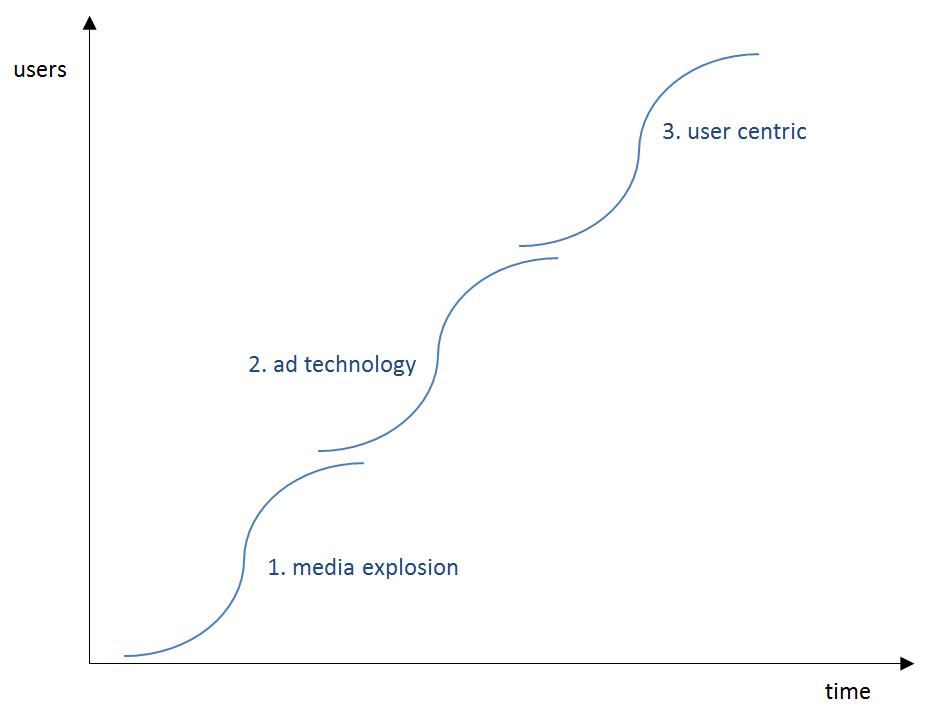In 1980, Alvin Toffler wrote "The Third Wave," in which he posited that societies, organizations and technology all go through three waves of maturation over time. His original example
was the agrarian age (1st wave); followed by the industrial revolution (2nd wave); and now we are in the information revolution (the 3rd wave).
Abstracting from this example one can
see in the graph below, a wave of innovation followed by mass production and then the third wave concept of demassification.

Demassification is where everyone gets it (almost) their way. Consumers no longer have to "pick any color they want as long as it's black." In fact, the information
(read big data) era we are in helps drive the manufacturing of a wide variety of features. And it seems like the items are made just for the individual. All of this is done without sacrificing the
economies of scale that made the item affordable to all.
Along similar lines Neal Mohan, vice president of display advertising for Google gave
this speech about the nature of display ads five years from now. He predicts:
- The number of display ad
impressions will decrease by 25% per person.
- Engagement rates across all display ads will increase by 50%.
- People will have a direct say in 25% of the ads they
see.
- 35% of campaigns will primarily use metrics beyond clicks and conversions.
- 25 billion ads per day will tell people why they are seeing them.
- Over 40% of online Americans will name display ads as their favorite ad format.
Neal is saying we are just now entering the 3rd Wave of digital advertising maturation
that Toffler predicted. We have moved from media explosion (Internet, ubiquitous connectivity and multiple devices) to technology that makes ads efficient and makes media pay, to a user-centric
3rd wave.
Here consumers have much more say -- in the ads they skip, ads they replay or their preferences for ads.

Google conducted a survey around this phenomenon. Respondents stated that if ads are relevant, engaging, personal, emotional, and/or contain offers, two-thirds would consider that
information useful or very useful. Listen carefully to Neil and you discover in all his predictions he is talking about ad creativity and emotional engagement at scale for users.
There are three key words in Neal's supposition: creativity, emotion and scale. Processing content for contextual data, as we do at ADmantX, allows us to observe:
- When the
creative side of the advertiser or their agency can directly develop, test, perfect and deploy ad-to-content matching algorithms without the intervention of NASA-like data gurus, then real creativity
has been restored in the digital world.
- When technology is built to read content like a human being, then channels of true contextual data about the readers' experience
includes their emotions and represents their real-time frame of mind during the ad match process.
- When you do these two things in less than 1 millisecond per URL, you are doing
so at Internet scale.
Google is investing heavily in this 3rd wave. That alone can sway an industry. But just like the adoption curves of each wave, others in the industry will
start investing and acceleration will takeoff.
The business decision, as in many other realms, is this: Do you jump in now while it's early, or do you wait to see who is
joining the party? Or, do you wait until a majority prove it works to mitigate the risk (and the reward) of adoption?
Your choice will be driven by your risk profile, culture, finances and
perhaps more. But make no mistake -- the 3rd wave of a user-centric advertising industry has started and will take over the rest before long.